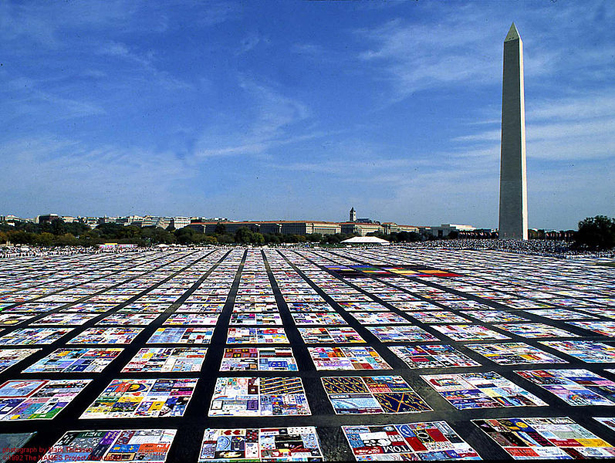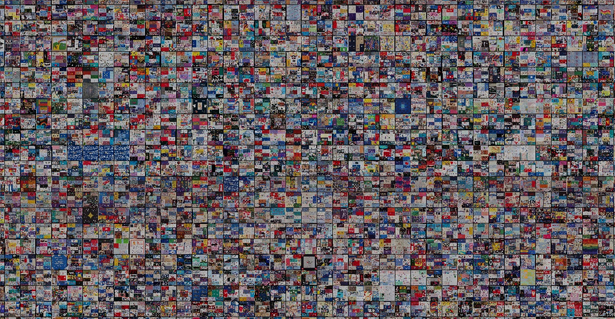A Map of Loss: The AIDS Quilt Goes Online
The AIDS quilt is so large that even the National Mall cannot hold it all at once. But the Internet can.

Over the last 25 years, families and friends of those who have passed away from AIDS have contributed 6'-by-3' panels -- about the size of an average grave -- to a giant tapestry known as the AIDS Quilt. Today that quilt is, in a literal sense, monumental, its size a testament to the disease's toll. With nearly 50,000 panels, it weighs more than 53 tons and would cover 1.3 million square feet were it ever to be displayed all at once. It is said to be the largest piece of community folk art in the world.
The quilt is now on display in its entirety on the National Mall. But "in its entirety" does not mean "all at once." The quilt is too big for the Mall to hold. Instead, droves of volunteers cycle the sections on and off the lawns.
But there is one place you can see the quilt all together, all at once. And that's online. A collaboration among Microsoft Research, the University of Southern California, the NAMES Project Foundation, and a handful of other institutions have used Bing mapping technology to create a zoomable "map" of the quilt, in addition to a suite of other digital exhibits about the history of AIDS, including an app for searching the quilt and an interactive timeline on a website ChronoZoom. (The ChronoZoom timeline is a particularly good resource for exploring how the quilt has grown over time and to take a look at it in its earliest stages.)

The Quilt is a piece of art that operates at two scales -- the entirety of it, impressing you with the expanse of the loss, and the individual panels, each telling the story of one person lost to the disease. Down the road, they told me, the project's leaders will create tools that will allow friends and family to digitally augment their panels, and the ChronoZoom timeline as well, with online narration and other multimedia. (Some of this capacity is already available in the app.)
Displaying the quilt in a way that conveys both scales is a challenge, but less so with the mapping tools afforded by the Internet. And this is somehow fitting. The quilt *is* a map, not of a place but of an epidemic, each panel a representation of feature in that history.